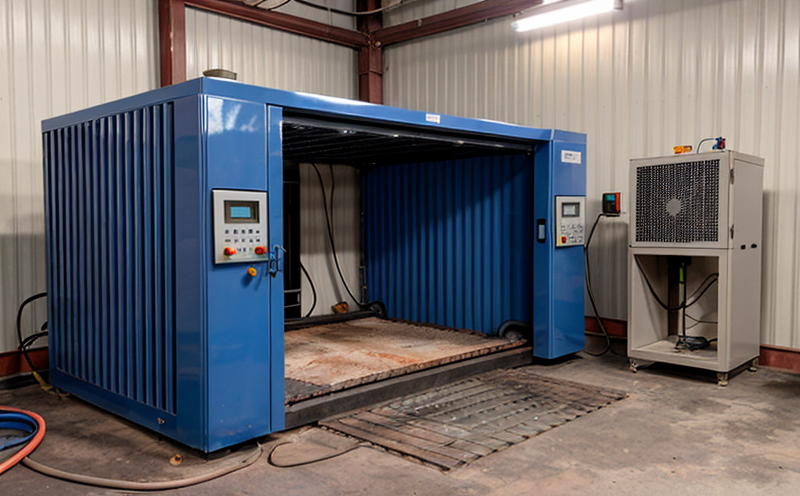Thermal aging followed by mechanical testing
The Crucial Role of Thermal Aging Followed by Mechanical Testing in Ensuring Material Reliability
In the ever-evolving landscape of industry and manufacturing, one factor stands out as a key differentiator between success and failure material reliability. The ability to withstand various environmental conditions, including temperature fluctuations, is critical for ensuring that products perform optimally throughout their lifecycle. This is where thermal aging followed by mechanical testing comes into play a laboratory service that has become an essential tool for businesses looking to guarantee the quality and durability of their materials.
At Eurolab, we understand the significance of this process in maintaining material reliability and preventing costly failures. In this article, we will delve into the world of thermal aging followed by mechanical testing, exploring its advantages, benefits, and applications in various industries.
What is Thermal Aging Followed by Mechanical Testing?
Thermal aging followed by mechanical testing is a laboratory service that involves subjecting materials to controlled temperatures for an extended period, simulating real-world conditions. This process allows us to assess how materials degrade over time when exposed to heat, light, or other environmental factors. The next step involves conducting mechanical tests on the aged samples to evaluate their properties and behavior under various loads.
The thermal aging process can be tailored to mimic specific environmental conditions, such as
High temperatures (e.g., 150C, 200C)
Low temperatures (e.g., -20C, -50C)
Humidity
Light exposure (UV, visible)
Following thermal aging, mechanical tests are conducted to assess the materials properties, including
Tensile strength
Yield stress
Elongation at break
Impact resistance
These tests provide a comprehensive understanding of how materials behave under various conditions, enabling us to predict their performance in real-world applications.
Advantages of Thermal Aging Followed by Mechanical Testing
The benefits of using thermal aging followed by mechanical testing are numerous and compelling. Here are some key advantages
Improved material reliability By simulating environmental conditions, we can identify potential failure points and develop strategies to mitigate them.
Enhanced product performance Understanding how materials behave under various loads enables us to design products that meet specific requirements and deliver optimal performance.
Reduced risk of costly failures Identifying potential weaknesses early on allows us to take corrective action, reducing the likelihood of expensive repairs or replacements.
Increased safety By assessing material behavior under extreme conditions, we can identify potential hazards and develop measures to prevent accidents.
Compliance with regulations Thermal aging followed by mechanical testing helps businesses meet industry standards and regulatory requirements for product quality and safety.
Key Benefits
Early identification of weaknesses Thermal aging followed by mechanical testing enables us to detect material degradation early on, allowing for prompt corrective action.
Optimized material selection By understanding how materials perform under various conditions, we can select the most suitable materials for specific applications.
Development of improved products The insights gained from thermal aging and mechanical testing inform product design and development, leading to improved performance and reliability.
Applications in Various Industries
Thermal aging followed by mechanical testing has a wide range of applications across various industries
Aerospace Understanding material behavior under extreme temperatures is critical for ensuring the safety and performance of aircraft components.
Automotive Thermal aging tests help manufacturers assess how materials degrade over time, enabling them to develop more reliable products.
Electronics Materials used in electronic devices are subject to various environmental conditions; thermal aging followed by mechanical testing helps ensure their reliability.
Medical Medical implants and devices require high levels of material reliability; this service helps manufacturers meet these stringent requirements.
QA Frequently Asked Questions
Q What is the purpose of thermal aging?
A Thermal aging simulates real-world environmental conditions to assess how materials degrade over time.
Q Can any material be subjected to thermal aging followed by mechanical testing?
A No, not all materials can withstand high temperatures or extreme conditions. Eurolab experts will advise on the suitability of this service for specific materials.
Q How long does the thermal aging process take?
A The duration of thermal aging varies depending on the material and desired level of degradation. Our team will work with you to determine the optimal testing schedule.
Q Can I get immediate results from thermal aging followed by mechanical testing?
A While we strive to provide timely results, some tests may require several days or weeks to complete. We will work closely with you to ensure that your project is completed efficiently and effectively.
Conclusion
In todays competitive business landscape, material reliability is more crucial than ever. Thermal aging followed by mechanical testing offers a powerful tool for ensuring the quality and durability of materials. At Eurolab, we are committed to providing expert laboratory services that help businesses like yours meet industry standards and regulatory requirements.
By partnering with us, you can
Enhance product performance
Reduce risk of costly failures
Improve material reliability
Dont compromise on material quality choose Eurolab for thermal aging followed by mechanical testing. Contact us today to learn more about our laboratory services and how we can support your business needs.




